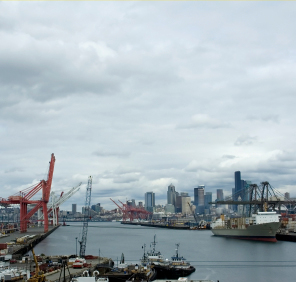|
|
|
INDUSTRY AT A GLANCE
From Forest2Market's Economic Outlook |
The Bureau of Economic Analysis (BEA) reported in January that the U.S. economy expanded by 5.7 percent in 4Q2009 - the fastest rate of growth in six years. On February 26, the BEA revised that number upward. Fourth quarter GDP now stands at 5.9 percent. Most of the growth occurred in private domestic investment (PDI), particularly inventory rebuilding.
Both the Wood and Paper Products industries indicated a pick-up in overall activity during January, although details were rather sketchy (see Table 1). Particularly important were rising new orders and falling customers' inventories.
|
 |
HOUSING MARKET UPDATE |

The real estate market showed new signs of weakness in January, a result of the temporary interruption of the homebuyer tax credit, weather in many parts of the country that was not conducive to house hunting and a continuous stream of foreclosures.
Sales of existing homes fell to 5.05 million units in January, down 7.2 percent from December (see Table 1), though still 11.5 percent above January 2009 levels. Months of inventory rose in January, up from 7.2 months to 7.8 months. This is 8.3 percent higher than December, but still an improvement of 18.8 percent from January 2009.
Sales of new homes declined in January as well, down 11.2 percent from 348,000 in December to 309,000. This is a record low. Inventory lost ground as well. January's inventory jumped 13.8 percent to 9.1 months. While disappointing, this figure is still 26.6 percent better than January 2009's number.
|
 |
PACIFIC NORTHWEST UPDATE |
By: Gordon Culbertson
Inland Eastside log prices have remained subdued while prices west of the Cascades have risen sharply. Douglas fir prices in the inland empire are up only 7% since spring 2009; similar logs in the coastal region increased nearly 30% over the same period. Domestic Douglas fir log prices converted on a common long-log-scale basis are now $30-50 per MBF higher west of the Cascades.
Lumber and plywood price increases in January and February led Westside mill buyers to escalate prices. Taking advantage of these higher product price levels, mills with low log inventories have been securing logs for "real time" production. Competition for logs purchased by exporters have cut deeply into domestic supplies as China and Korea sorts now include many common quality logs historically destined for domestic building products.
|
 |
PORTS LOOK TO WOOD |
For Economic Development and the Future
In the Northwest, at the Port of Port Angeles in Washington, a 554-foot bulk cargo ship is ready for loading. The ship will carry logs--the equivalent of 2 million board feet of lumber--to Korea and China. At the Port of Astoria in Oregon, the port commission has started lease negotiations with Westerlund Log Handlers for 12-15 acres of land for 10 years. Westerlund intends to export logs to China.
An increasing number of Pacific coast port authorities are investigating potential opportunities for increasing exports. Some, like Port Angeles and Astoria, are reclaiming the past and hoping to export logs just as they did decades ago. Others are looking to export wood pellets to new energy markets. Since domestic demand for wood products is likely to remain anemic for the next five years, there is hope in these communities that exporting wood to Asia will create jobs and support local economies.
|
 |
NEW SFI STANDARDS |
|
By: Lina Jenkins
After an exhaustive 18-month review process, Sustainable Forestry Initiative (SFI), Inc. has released its 2010-2014 Standard. In an effort to clarify and augment the scope of the 2005-2009 Standard, the SFI expanded upon the previous standard by increasing its principles from nine to fourteen and adding seven objectives, four performance measures and twelve indicators. Currently, SFI certifies 181 million acres of North American forests, making it the single largest forest certification standard in the world. To further the use of best management practices on forested lands, the new standard added or revised several key tenets that encourage or require better adherence to these practices. The new standards clarify exceptions to average clearcut sizes in order to meet legal requirements.
|
|
|
|
|